

Paid Marketing
We Make Perfect Solution in Business
Paid marketing is a fundamental component of modern business strategies. With the rapid evolution of digital platforms, businesses now have more tools than ever before to reach and engage their target audiences. Paid marketing refers to any form of marketing that involves spending money to promote a product, service, or brand to a specific audience. It spans a wide variety of methods, including social media ads, search engine marketing (SEM), display ads, influencer collaborations, and more. In this article, we will explore the different types of paid marketing, its advantages, challenges, and how businesses can leverage it effectively to drive growth and achieve their marketing goals.
Paid marketing is a powerful tool for businesses seeking to increase visibility, drive traffic, and boost sales. With the right strategies, paid campaigns can yield significant returns. However, success requires careful planning, budget management, and continuous optimization. By understanding the different types of paid marketing, the benefits, and challenges, businesses can leverage these tools to stay competitive in today’s crowded digital marketplace.
Benefits Of Paid Marketing

⦁ Immediate Results - One of the most attractive features of paid marketing is its ability to generate immediate results. Unlike organic strategies such as search engine optimization (SEO), which can take months to yield significant traffic and visibility, paid marketing provides instant visibility. Whether you're running a Google Ads campaign or promoting a post on social media, you can start seeing clicks, conversions, and leads almost immediately after launching a campaign.
⦁ Scalability and Flexibility - Paid marketing campaigns are highly scalable. Whether you're just starting with a small budget or looking to expand, you can adjust your spending in real-time based on the performance of the campaign. For example, if a particular ad group or keyword is performing well, you can allocate more funds to it to maximize results. Detailed insights: Platforms like Google Analytics, Facebook Insights, and others provide in-depth metrics.
⦁ Brand Visibility and Awareness - Paid marketing campaigns can significantly increase your brand's visibility across various platforms. Even if people don’t click on your ads immediately, they are still exposed to your brand message. Repeated exposure, particularly with display ads or social media ads, helps to increase brand recognition and recall. This type of exposure is invaluable, as it builds awareness that can lead to future conversions.
⦁ Increased Conversion Rates - When businesses target their audience effectively, paid marketing can significantly increase conversion rates. Whether the goal is to drive purchases, generate leads, or encourage downloads, paid campaigns can be designed with specific calls to action (CTAs) and optimized landing pages to drive these desired actions. With precise targeting and compelling messaging, paid ads can lead to higher conversion rates compared to traditional marketing efforts.
⦁ Highly Targeted Reach - Paid marketing allows businesses to reach their audience with precision. Through various targeting options available on platforms like Google Ads, Facebook Ads, LinkedIn, and more, advertisers can focus their efforts on specific demographics, interests, behaviors, and geographic locations. This level of targeting ensures that marketing budgets are used efficiently by reaching individuals who are most likely to be interested in the product or service.
⦁ Measurable and Data-Driven - One of the standout benefits of paid marketing is the ability to measure performance. Unlike traditional marketing methods (e.g., TV, print ads), which can be difficult to track, paid digital campaigns offer detailed analytics. Marketers can monitor real-time data on clicks, impressions, conversions, cost-per-click (CPC), and return on investment (ROI). This allows for precise optimization of campaigns based on performance.
⦁ Enhanced Control and Customization - Paid marketing offers a high degree of control over various aspects of the campaign. Businesses can set the budget, choose specific keywords, define target audiences, select ad placements, and even control the times of day when their ads are shown. This level of customization helps optimize the campaign’s effectiveness and ensures that the brand's message aligns with the right audience at the right time.
⦁ Cost-Effective for Small and Medium-Sized Businesses - Paid marketing can be highly cost-effective, particularly for small and medium-sized businesses (SMBs). Unlike traditional advertising methods such as TV or print, paid digital marketing allows businesses to set flexible budgets and achieve results even with limited resources. Furthermore, the ability to track ROI and adjust campaigns ensures that businesses only spend on strategies that are driving results. Many digital advertising platforms allow businesses to start with a relatively small budget and scale as needed.
Paid Marketing Strategies
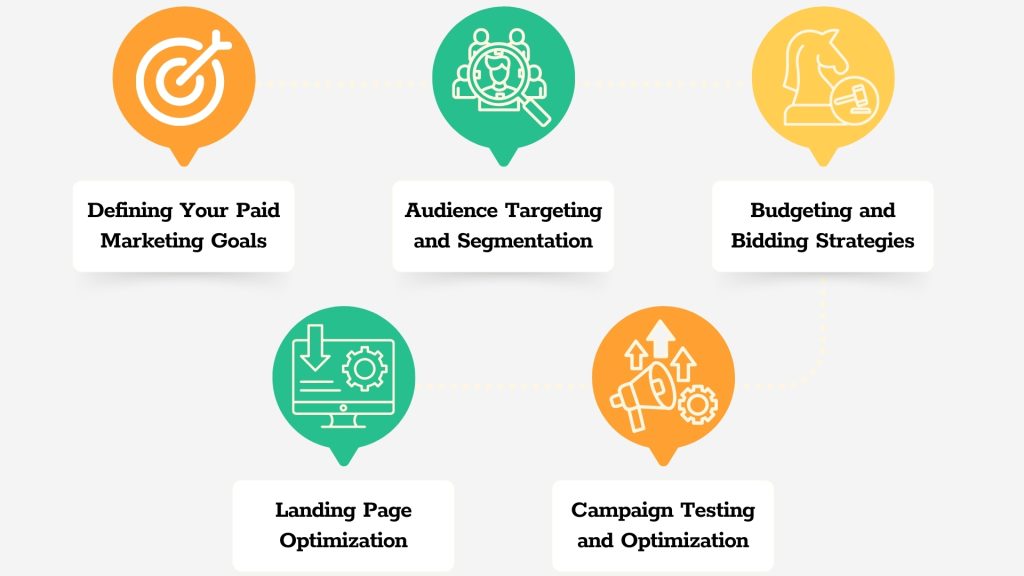
A paid marketing strategy involves investing in various advertising channels to reach your target audience and drive measurable outcomes, such as website traffic, sales, or leads.
⦁ Defining Your Paid Marketing Goals: - The first step in developing a paid marketing strategy is setting clear, measurable objectives that align with your business goals. Whether you want to increase brand awareness, drive traffic, generate leads, or increase sales, having well-defined goals will help guide your decisions throughout the campaign.
⦁ Audience Targeting and Segmentation: - A successful paid marketing campaign requires a deep understanding of your target audience—who they are, where they spend their time online, and what drives their purchasing decisions. Targeting the right audience ensures your ads are seen by people most likely to convert, improving ROI.
Key Audience Insights to Gather:
Demographics: Age, gender, income level, occupation, and education.
Geographics: Location, whether it's global, national, or hyper-local targeting.
Psychographics: Interests, values, and buying behaviors that inform what products or services they might be interested in.
Behavioral Data: Past online behavior, search habits, previous interactions with your brand, and how they engage with similar products.
⦁ Budgeting and Bidding Strategies: - Effective budget allocation is crucial to running a successful paid marketing campaign. Your budget should be determined based on your goals, the cost of advertising on selected platforms, and the expected ROI. Additionally, choosing the right bidding strategy will help ensure that your budget is spent efficiently.
Budget Allocation:
Brand Awareness Campaigns: May require a larger budget across multiple platforms to maximize reach.
Lead Generation Campaigns: Can be more targeted, and thus may require less spend, but you’ll need to allocate more to campaigns that have the highest lead-to-conversion rates.
Sales-Focused Campaigns: Typically require the highest investment, as they aim for direct conversions, often with higher competition.
⦁ Landing Page Optimization: - Once users click on your ad, they should be directed to a well-optimized landing page that drives conversions. A well-designed landing page should align with the ad’s message and offer a seamless user experience.
Key Elements of Landing Page Optimization:
Relevance: The content on the landing page should directly correlate with the ad’s message. If users clicked on an ad for a product, they should land on a page that offers that exact product.
Load Speed: Slow-loading pages can cause users to bounce before they even have a chance to engage. Ensure your landing page loads quickly.
Clear CTA: Just like the ad, your landing page should have a prominent and clear CTA.
Mobile Optimization: A significant portion of web traffic comes from mobile devices. Ensure your landing page is responsive and easy to navigate on all screen sizes.
⦁ Campaign Testing and Optimization: - Testing and optimization are critical to the success of any paid marketing campaign. With the rapidly changing digital landscape and varying user behavior, continual testing and optimization allow marketers to adapt, refine, and maximize the return on investment (ROI) from their campaigns. This process involves evaluating different elements of your campaigns, from the creative to the targeting strategy, and tweaking them to improve overall performance.
Types of Paid Marketing

Native Advertising
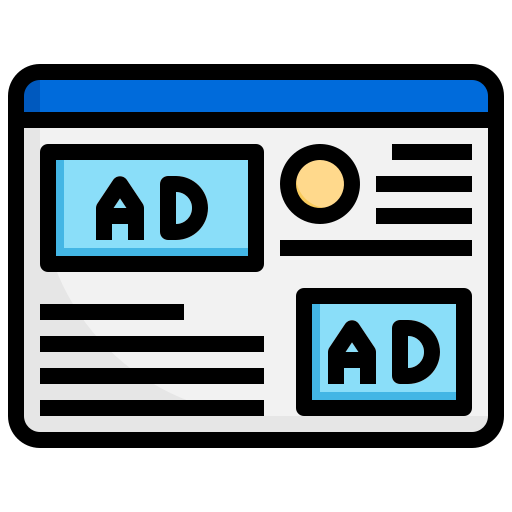
Native Advertising

Display Advertising

Display Advertising

Remarketing
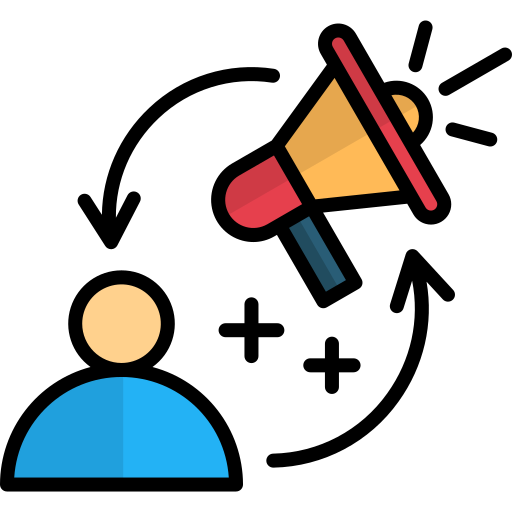
Remarketing

Influencer Marketing
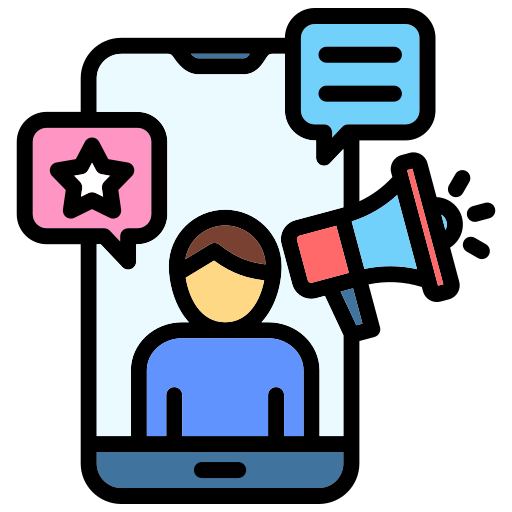
Influencer Marketing
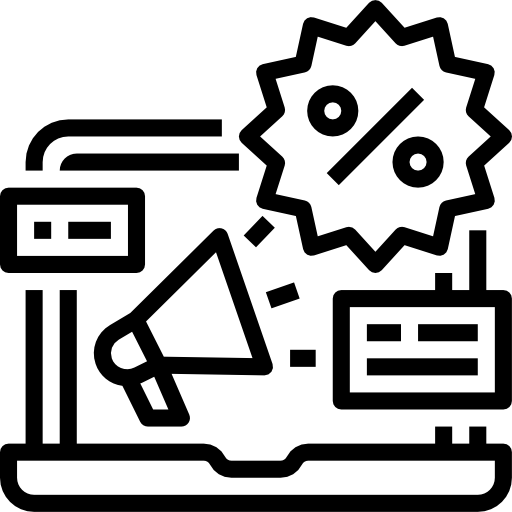
Google Shopping Ads
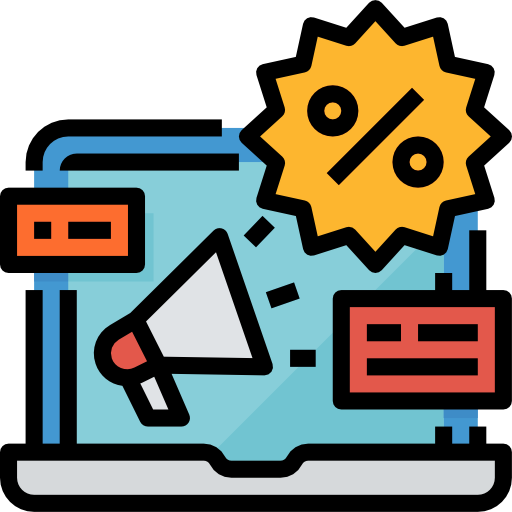
Google Shopping Ads

Email Marketing
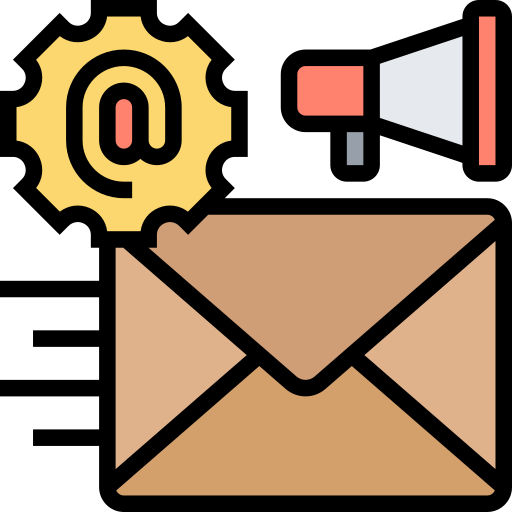
Email Marketing

Pay-Per-Click (PPC)
Paid search Marketing often referred to as Search Engine Marketing (SEM) or Pay-Per-Click (PPC), is one of the most effective methods for driving targeted traffic to websites. It involves placing ads on search engine result pages (SERPs) based on the keywords users are searching for. This model ensures that businesses are visible to users who are actively looking for products or services similar to what they offer. In this detailed breakdown, we will cover the core components, mechanisms, advantages, best practices, and how businesses can maximize the effectiveness of their paid search campaigns.
Paid Search Marketing is an incredibly effective tool for driving targeted traffic to your website, improving brand visibility, and generating leads or sales. By leveraging the right keywords, creating compelling ad copy, optimizing landing pages, and consistently monitoring performance, businesses can harness the power of paid search to meet their marketing objectives.
Display Marketing
Display Marketing is a form of online advertising that involves placing visually compelling ads—such as banners, images, or videos—on websites, apps, or social media platforms. These ads are shown to users based on their interests, behaviors, or browsing history. Display ads are often used for brand awareness, remarketing, and driving traffic to specific offers or landing pages. They can be highly effective when used strategically as part of a broader digital marketing campaign.
Display Marketing refers to the use of graphic ads that are placed on websites, social media platforms, mobile apps, and other digital properties. These ads usually appear in the form of:
Banner Ads: These are rectangular graphics placed on websites or apps, often at the top, bottom, or sides of the page.
Image Ads: Full-page or in-article images that might represent a product, service, or brand.
Video Ads: Short video clips, typically 15 to 30 seconds, that play before, during, or after video content on platforms like YouTube, or as standalone video ads on websites.
Interactive Ads: Ads that involve user interaction, such as surveys or games.


Social Media Marketing
Social media Marketing is a form of digital marketing that leverages the reach and targeting capabilities of social media platforms to deliver ads to specific user groups. Unlike traditional advertising, social media ads can be tailored to reach users based on a wide variety of factors, such as demographics, interests, behaviors, and even user activities. These ads can be in the form of image ads, video ads, carousel ads, story ads, and more.
Social media advertising refers to the process of using paid ads to promote a business, product, service, or brand on social media platforms. Advertisers create targeted ads and use the platform’s features to deliver them to a defined audience.
Social media platforms have vast user bases and sophisticated targeting tools that allow businesses to reach highly specific audiences, making it an effective and scalable way to grow awareness, drive traffic, and increase conversions.
Affiliate Marketing
Affiliate Marketing is a performance-based marketing strategy where businesses (referred to as merchants or advertisers) partner with affiliates (typically influencers, bloggers, or content creators) to promote their products or services in exchange for a commission on sales, leads, or other actions generated by the affiliate’s marketing efforts.
Affiliate Marketing allows companies to expand their reach by leveraging the audiences of affiliates without having to invest upfront in ads or marketing efforts. For affiliates, it provides a way to monetize their content and audience by recommending products or services they believe in.
In this detailed guide, we’ll explore what affiliate marketing is, how it works, its types, benefits, and best practices to help you succeed as an affiliate marketer or merchant.
Affiliate Marketing is a form of marketing in which an affiliate earns a commission for driving traffic or sales to an advertiser’s website through their marketing efforts. Essentially, it’s a partnership where affiliates promote a merchant’s product or service using various marketing strategies, and in return, they get paid a commission for any resulting actions, such as sales or leads.


Video Marketing
Video Marketing refers to the use of video content to promote products, services, or brands. It includes paid promotional videos that appear across multiple digital platforms, from social media channels to video streaming sites. Video ads can vary in format, duration, and placement, and they typically combine visuals, sound, and sometimes text to communicate a brand’s message effectively. Video ads can be delivered in several ways, including pre-roll ads (shown before the content), mid-roll ads (shown during the content), and post-roll ads (shown after the content), as well as non-linear formats like social media stories and shoppable ads. With the rise of mobile devices, video advertising has become more accessible, helping brands reach consumers on-the-go across multiple touchpoints.
Video Marketing is a form of digital advertising where businesses create video content to promote their products, services, or brand. These videos are typically placed on platforms like YouTube, Facebook, Instagram, Twitter, and LinkedIn, as well as on other sites that host video content or allow video ad placements.
Native Marketing
Native Marketingis a form of paid media where the ad content blends seamlessly into the platform where it appears, mimicking the form and function of the surrounding editorial or user-generated content. Unlike traditional display ads that interrupt the user experience, native ads are designed to match the look, feel, and function of the platform, making them less intrusive and more engaging. Because native ads feel like part of the content, they are often more effective at capturing the audience’s attention and generating better engagement. Native advertising refers to advertisements that match the design, style, and function of the platform they appear on, making them look like natural content rather than traditional, disruptive ads. The goal is to provide a non-intrusive, native experience for users while still promoting a product, service, or brand.
Native Marketing is a powerful tool for marketers looking to connect with their audience in an organic and non-intrusive way. By blending seamlessly with editorial content, native ads are able to engage users and drive higher levels of interaction than traditional display ads.

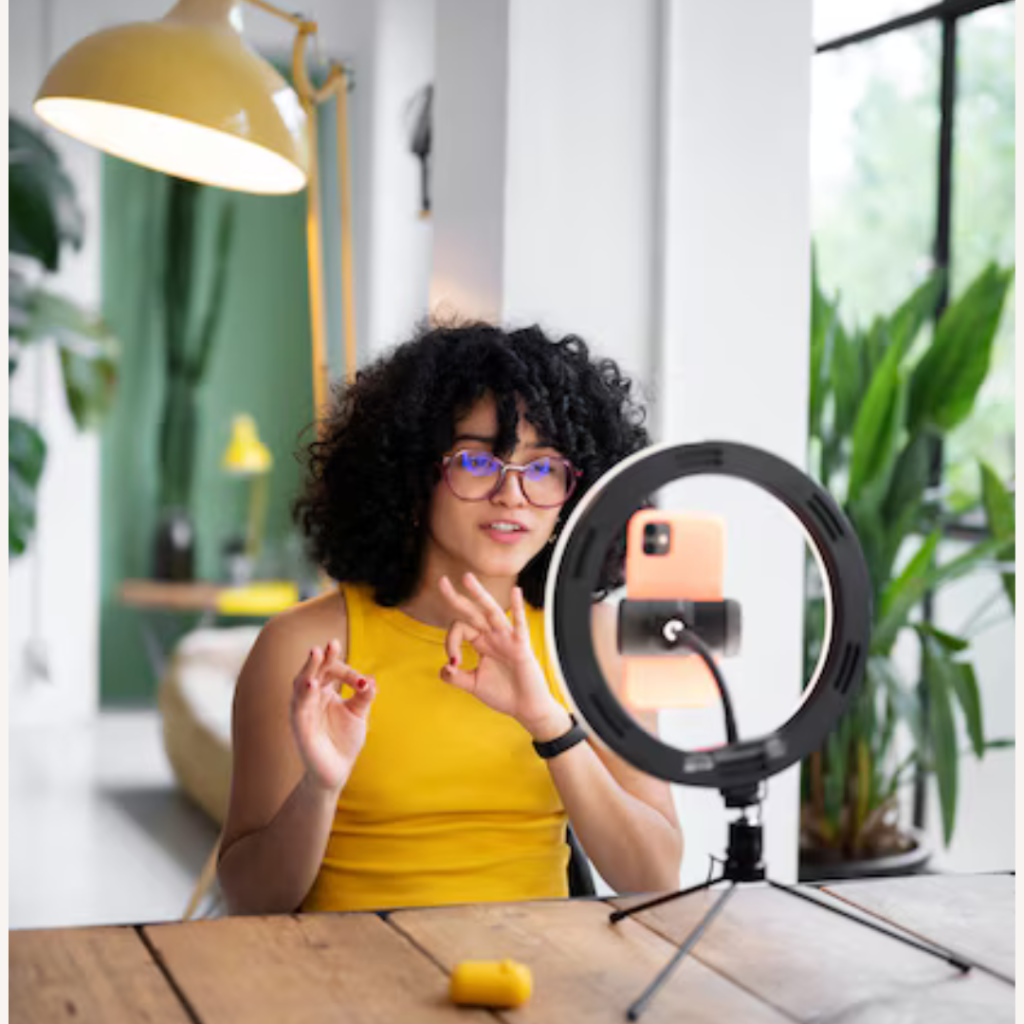
Influencer Marketing
Influencer marketing is a form of social media marketing that focuses on using key leaders (influencers) to promote a brand’s message to a larger audience. Instead of targeting the general population, influencer marketing focuses on specific individuals who have the power to influence the purchasing decisions of their followers. Influencers often build their reputation through their expertise, personal brand, or lifestyle in a specific niche, making them a trusted source for product recommendations. These influencers can be celebrities, experts, content creators, bloggers, or micro-influencers with smaller but highly engaged followings. Influencer marketing campaigns often involve paid collaborations where the influencer promotes the product through posts, videos, or stories that align with their personal brand.
Influencer marketing has proven to be a powerful tool for brands seeking to increase visibility, engagement, and sales. By leveraging influencers' trusted relationships with their audiences, businesses can create more authentic and effective marketing campaigns. However, successful influencer marketing requires careful planning, choosing the right influencers, and measuring success.
Programmatic Marketing
Programmatic Marketing refers to the use of automated technology to buy and optimize digital advertising. Unlike traditional advertising methods, which involve manual negotiations, direct contracts, and human decision-making, programmatic marketing relies on algorithms and data to purchase ad space in real-time. This process streamlines the advertising process, making it more efficient, cost-effective, and data-driven. By automating the ad-buying process, programmatic marketing enables advertisers to target specific audiences with precision, optimizing their campaigns continuously based on performance data.
Programmatic Marketing is the use of software and data to automate the process of buying and optimizing digital advertising. It involves using algorithms to target specific audiences in real-time and purchasing ad space from various online publishers through ad exchanges. The key advantage of programmatic marketing is its ability to use data to make smarter decisions, targeting the right people at the right time, and optimizing campaigns to achieve the best possible results.

Paid Marketing Platform
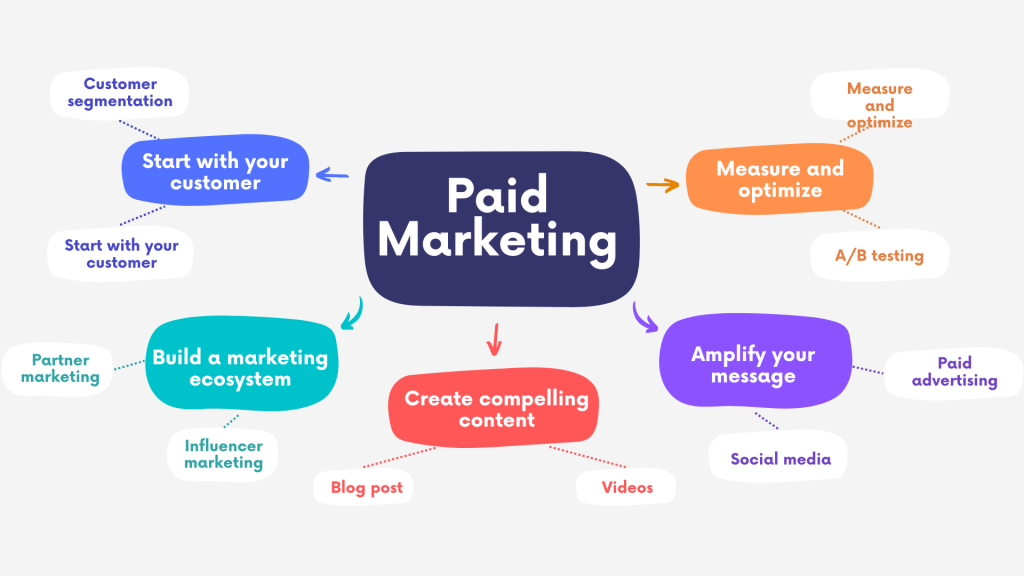
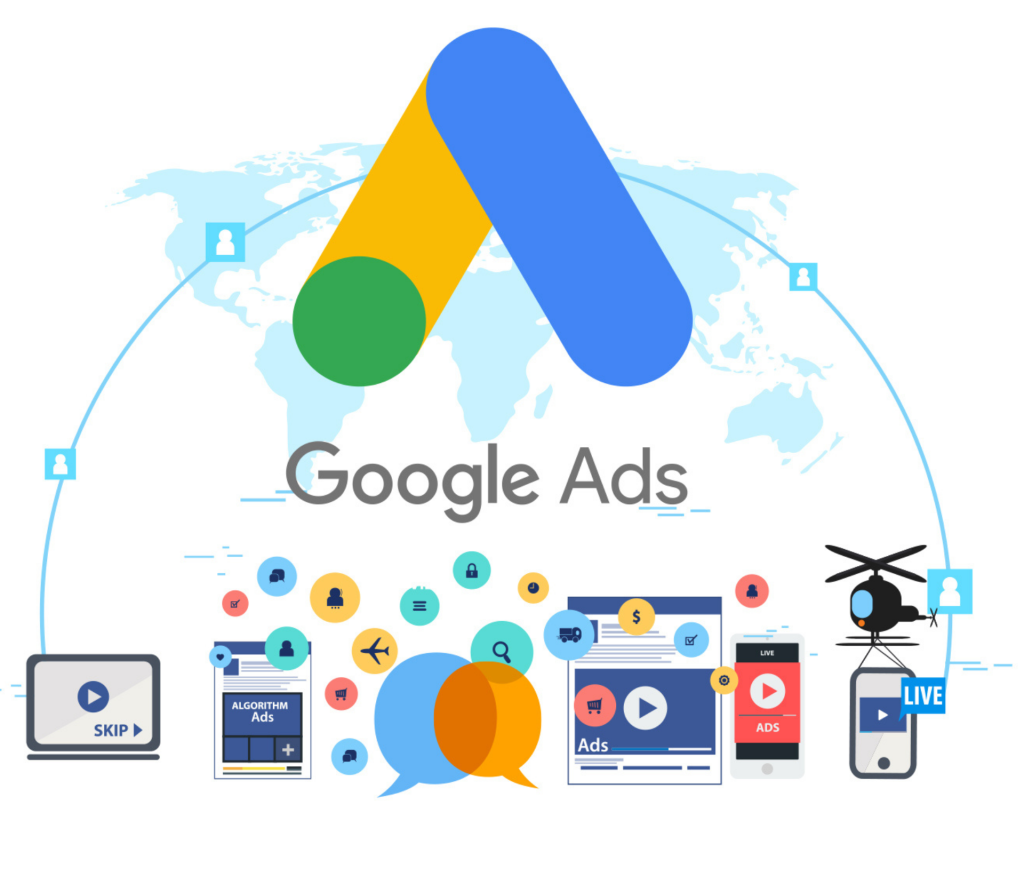
Google Ads (formerly Google AdWords)
Google Ads is a paid advertising platform where businesses bid on keywords to have their ads shown to users when they perform specific searches. The platform operates on a pay-per-click (PPC) model, meaning you pay only when someone clicks on your ad. Google Ads enables advertisers to reach their audience at various stages of the buying cycle—whether they’re searching for information, exploring products, or ready to make a purchase.
⦁ Search Ads: Text ads that appear on Google search results pages.
⦁ Display Ads: Banner ads shown on websites across the Google Display Network (GDN).
⦁ Video Ads: Ads shown before, during, or after YouTube videos.
⦁ Shopping Ads: Product-based ads that appear in Google search results and Google Shopping.
Facebook and Instagram Ads
Facebook and Instagram are two of the most popular social media platforms, with billions of active users worldwide. Both platforms are owned by Meta (formerly Facebook Inc.), and businesses can use Facebook Ads and Instagram Ads through a single unified advertising platform—Facebook Ads Manager. Whether you're looking to increase brand awareness, drive traffic, generate leads, or boost sales, Facebook and Instagram offer highly effective advertising solutions. This guide will help you understand how to leverage both platforms for your advertising campaigns, outlining key features, best practices, and strategies to optimize your ad spend and achieve your marketing goals.
⦁ Facebook: Over 2.9 billion monthly active users.
⦁ Instagram: Over 2 billion monthly active users
⦁ Photo Ads, Video Ads, Carousel Ads, Collection Ads, Messenger Ads, Story Ads
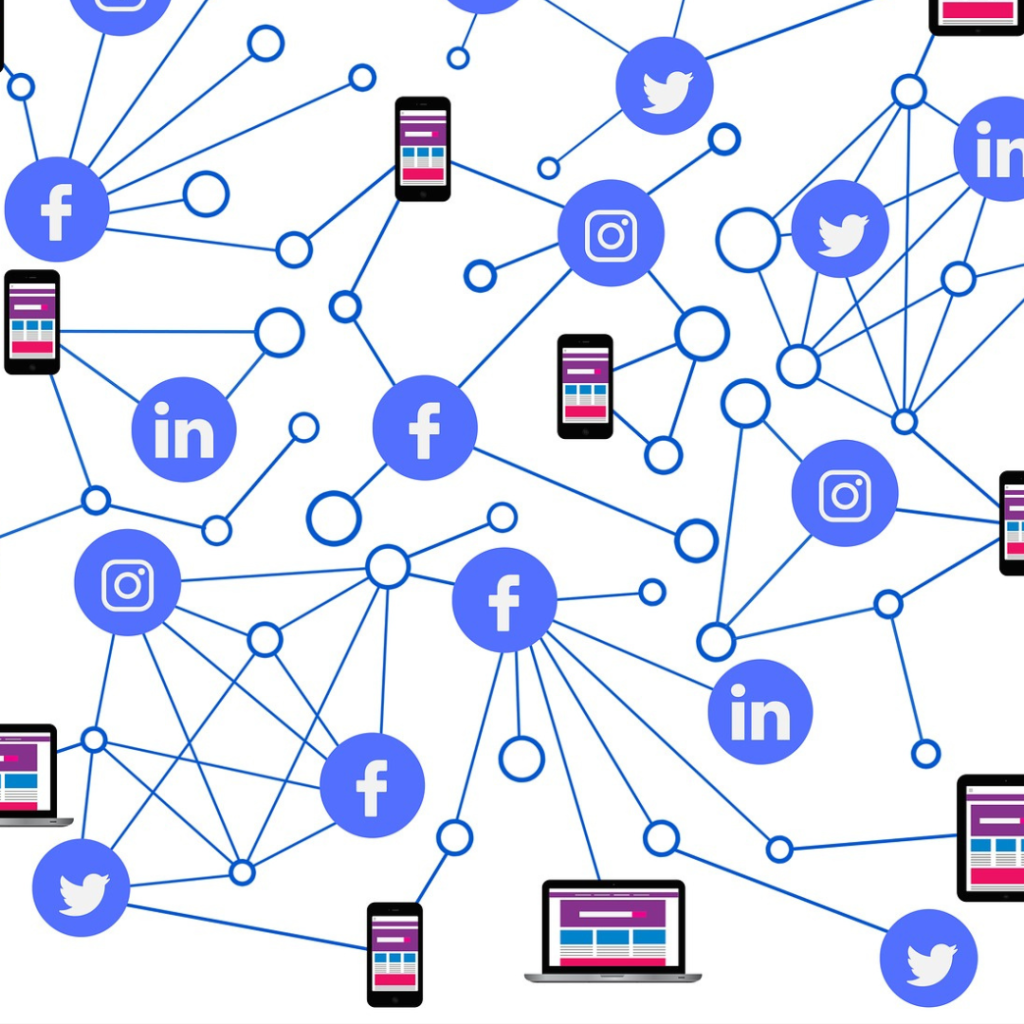
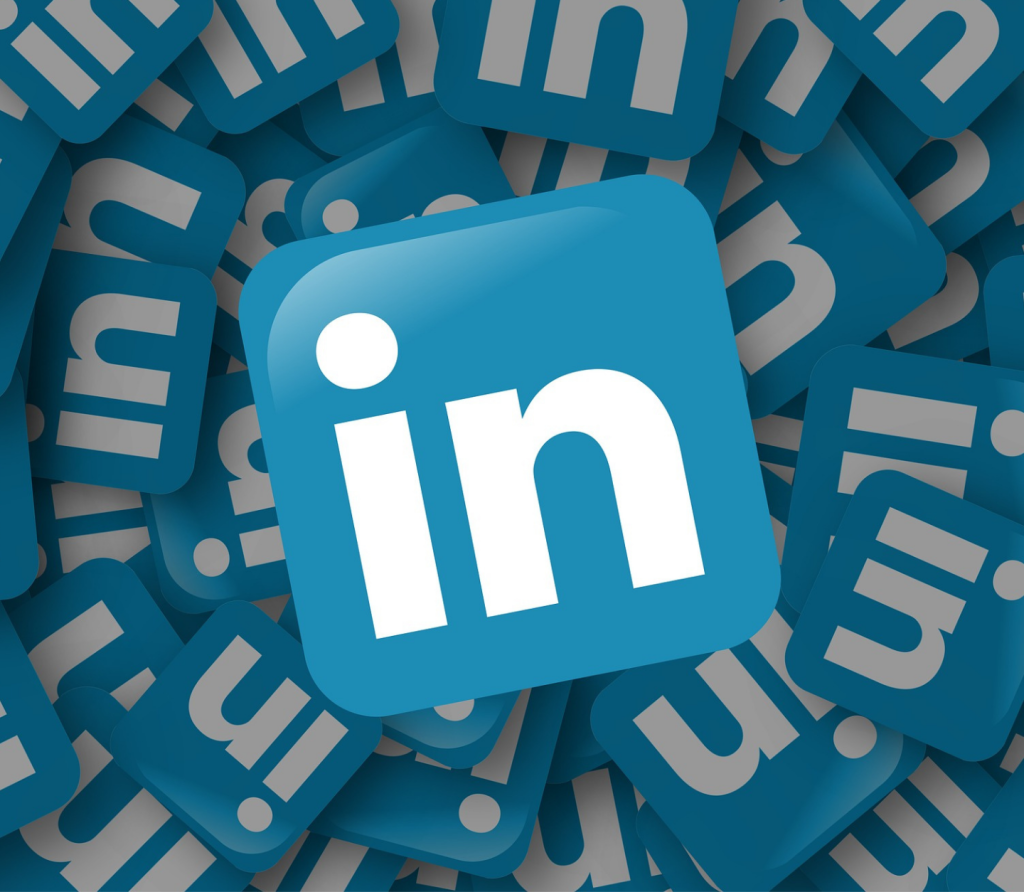
LinkedIn Ads
LinkedIn is the world’s largest professional network, with over 900 million members across more than 200 countries. With its focus on professional development, job hunting, networking, and B2B marketing, LinkedIn has become a powerful advertising platform, especially for businesses targeting professionals, decision-makers, and executives. LinkedIn Ads provide highly effective tools for targeting specific industries, job titles, and professional behaviors, making it an ideal platform for B2B marketers, recruiters, and businesses offering professional services. In this guide, we’ll cover the different types of LinkedIn Ads, how to set up campaigns, targeting options, best practices, and strategies to maximize the effectiveness of your LinkedIn advertising campaigns.
⦁ Job title: Target decision-makers or employees at specific levels (e.g., CEOs, managers, directors).
⦁ Industry: Reach people working in specific industries such as finance, technology, healthcare, education, etc.
